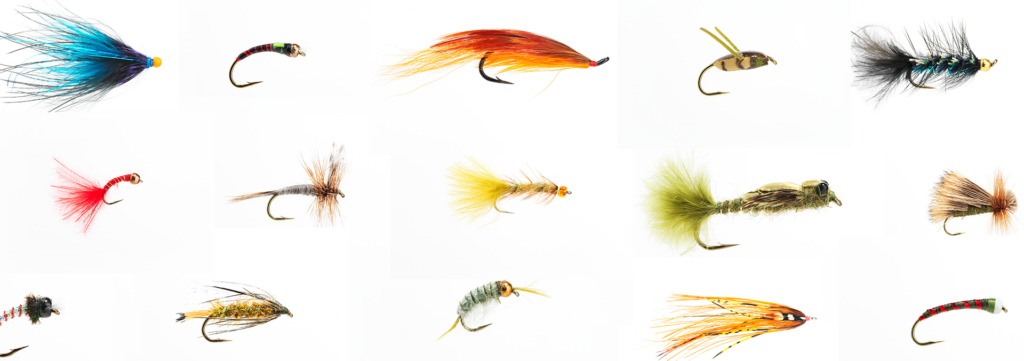To become a proficient fly fisher on British Columbia’s productive Interior lakes requires spending the time to learn how their ecosystems function. This includes the structure of the waterbody; preferred habitat of the trout, char, and other game fish species; and the best times of the year to catch these fish. To truly understand the puzzle, you need to learn what food sources are available to trout, and when. This trout food chart, showing the emergence/availability of major aquatic food sources for the B.C. Interior’s trout lakes, was created to help you have more success on the water.
- The chart starts in March, as we often have open water by mid-March (however, each year can have a different timing for ice-off).
- Fish have the ability to feed on all the life stages of the aquatic insects listed, though the most intense feeding occurs during the actual emergence sequence of the pupal or larval stage to the adult stage.
- By month, you can see which food sources to focus on. For example, leeches, chironomids, mayflies, and damselflies could all be emerging in May, and the appropriate pupal or nymphal patterns should be tried. Leeches and shrimp would also be good patterns to fish.
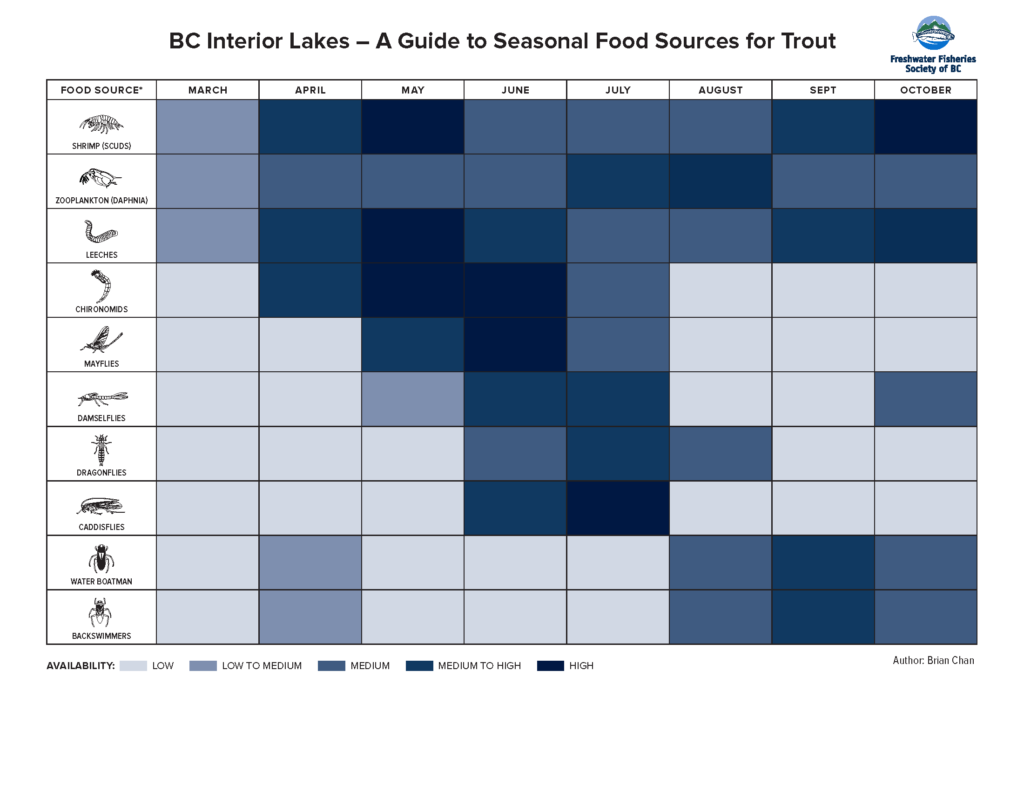
Zooplankton
Zooplankton are tiny free-swimming crustaceans that, due to their erratic swimming motion, are often referred to as water fleas. Look closely into the water and you will see them twitching through the water. Daphnia are the most common zooplankton found in our productive lakes. They congregate in dense clusters or swarms that make them an easy meal for trout and other species of fish. Zooplankton move up and down through the water column following their food sources: suspended algae and bacteria. Daphnia and other zooplankton are at their highest densities during the summer months.
Shrimp (scuds)
Freshwater shrimp are the most abundant, and a staple food source of trout in our productive trout lakes. Both Gammarus and Hyalella shrimp can be found living in the same lake. The key to having healthy shrimp populations is water that is rich in calcium, which is essential for the formation of chitinous exoskeletons. Shrimp are found hiding in the vegetation and woody debris that cover the bottom of the shallow or shoal areas of a lake. Trout can feed on shrimp throughout the year, which is why fishing imitations of them can be so effective.
Leeches
Every fly box should have a selection of leech patterns. Leeches are a readily available food source found in all types of lakes. They are often extremely abundant in the Interior’s trout lakes. Leeches are found hiding in and under aquatic vegetation, woody debris, and rocks that line the bottom of the shallow or shoal areas of a lake. Trout will often feed on very small leeches, which is why micro-leech patterns are so effective. Leech colouration varies with the habitat they are living in, but black, brown, and shades of green are common.
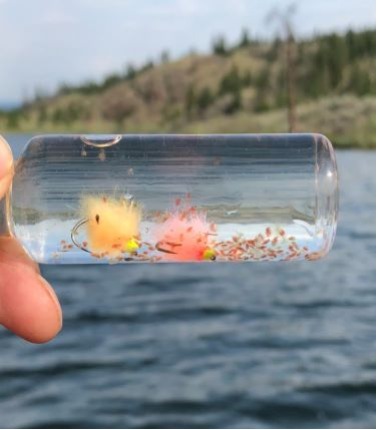
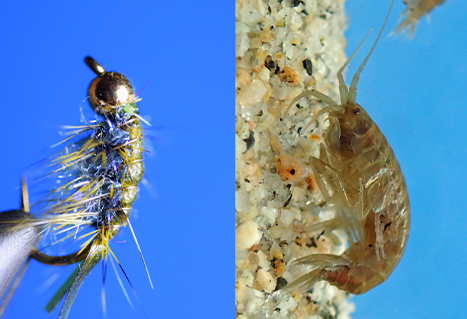
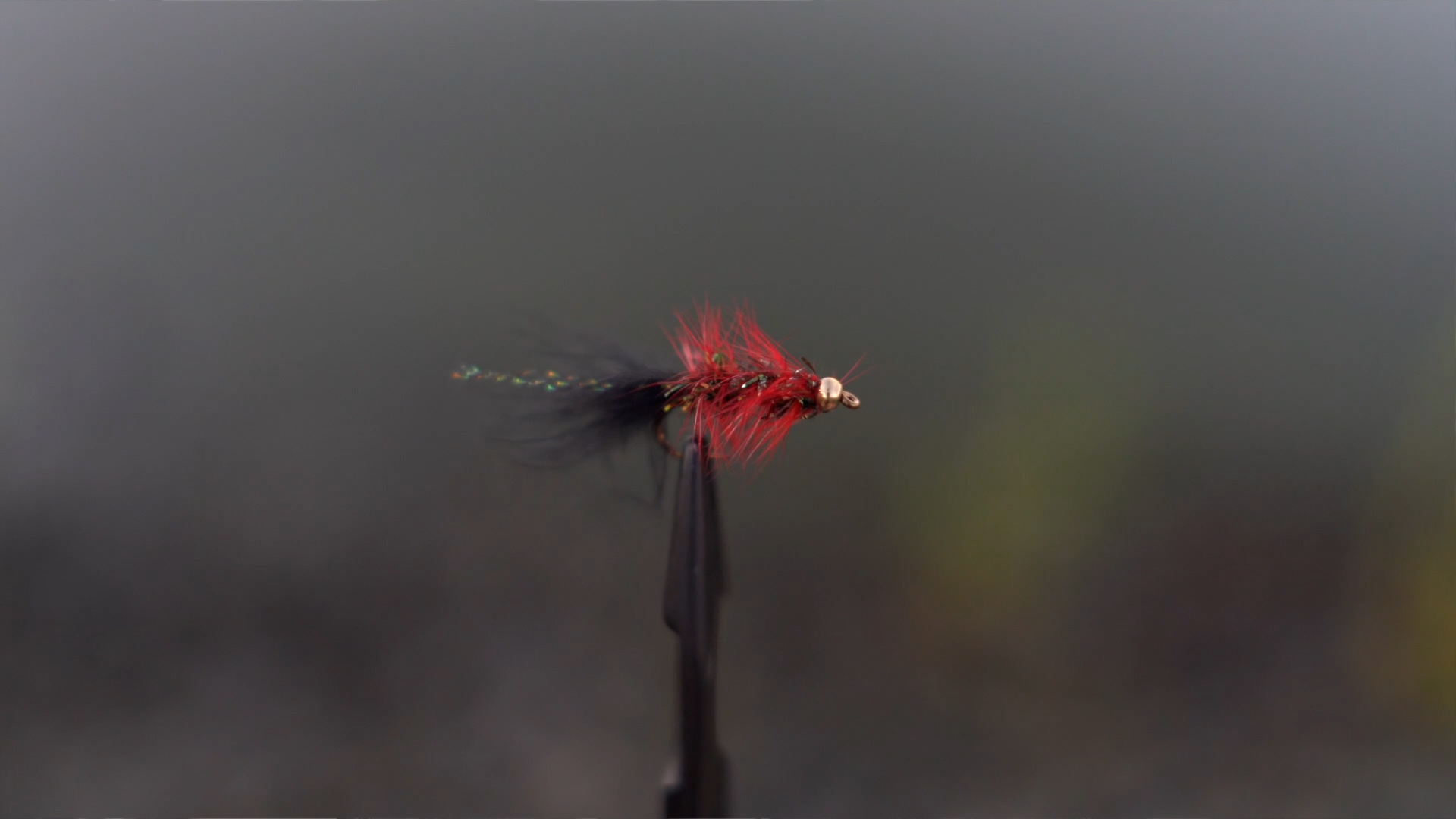
Chironomids
Chironomids or midges are undoubtedly the most intense, prolonged, and sought-after aquatic insect hatch found in lakes. While fish target the larval, pupal, and adult stages of this two-winged insect, it is the pupal stage that attracts the most attention overall. There are literally thousands of species of chironomids, which translates into a wide variety of pupal sizes and colours. An angler’s goal is to match the size and colour of the real pupa that is emerging on any particular day. A throat pump and a small aquarium net are valuable tools in solving that puzzle.
Mayflies
Mayflies are a common inhabitant of productive or nutrient-rich lakes. Nymphs live in the dense vegetation covering the shallow-water zones of a lake. Mayfly nymphs are easily identified by their three slender tails and sinusoidal swimming motion. The most intense emergences or hatches occur over a period of several weeks during the late-spring to early-summer months. Newly emerged adult mayflies provide excellent dry-fly fishing.
Damselflies
Adult damselflies are easily recognized by their slender, often blue/black-barred abdomens and a pair of clear, elongated wings. The nymphal stage of damselflies crawls amongst the bottom vegetation, where they search out their next meal of shrimp or mayfly nymphs. Damselflies spend several years in the nymphal stage before emerging into the adult form. The nymphs are a year ’round food source, but are most highly sought by trout during emergence swims, and as juvenile or immature nymphs late in the fall season.
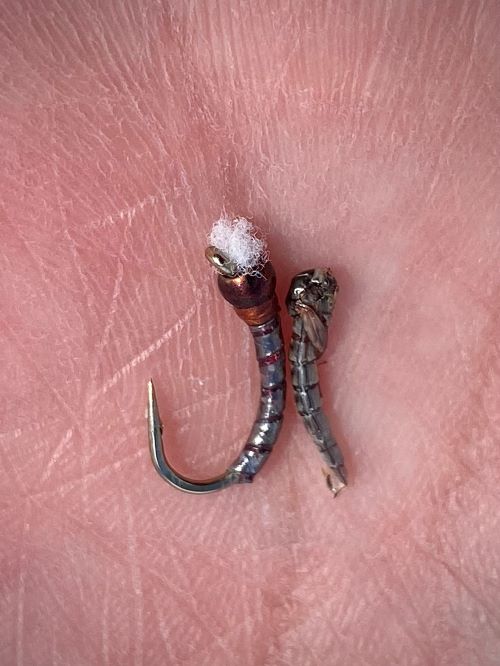

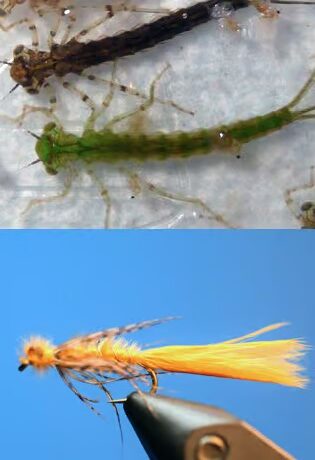
Dragonflies
Dragonflies are the apex predator of our productive trout lakes. The dragonfly nymph is a carnivore, chasing down or ambushing anything smaller than itself. Dragonflies will spend up to four years in the nymphal stage before emerging into the adult form. Like most other aquatic insects, dragonfly nymphs hide out in the benthic or bottom vegetation, woody debris, or under rocks that cover the shoal zone of the lake. Dragonfly nymphs are sought out by foraging trout at all times of the year, but especially during their emergence migrations to shore.

Caddisflies
Caddisflies or sedges are well-known to the serious stillwater fly fisher. The newly emerged adults provide some of the most explosive dry-fly fishing found anywhere. The caddisfly larvae are easily recognized by the cases they build and live in. The transformation from the larval to pupal stage occurs in these larval cases. Fully developed pupae then break out of their larval cases, and swim quickly to the surface of the lake. Once there, the adult stage emerges, and typically runs across the surface film prior to getting airborne and flying to the safety of shoreline vegetation. Trout eagerly await the annual emergence swims, which typically occur during the early- to mid-summer months.

Water Boatmen and Backswimmers
Water boatmen and backswimmers are air-breathing insects that live 99% of their lives underwater. Both are common food sources for trout that are found in nutrient-rich lakes. They are easily identified by their swimming actions. Boatmen and backswimmers have a pair of hind legs that are elongated and feathered, which allows them to swim quickly through the water. Boatmen are much smaller than their backswimmer cousins. They undertake swarming and mating flights during the early-spring and late-fall months. When returning to a lake, these hemipterans dive into the water, giving the appearance of big raindrops – which trout and other fish key in on.
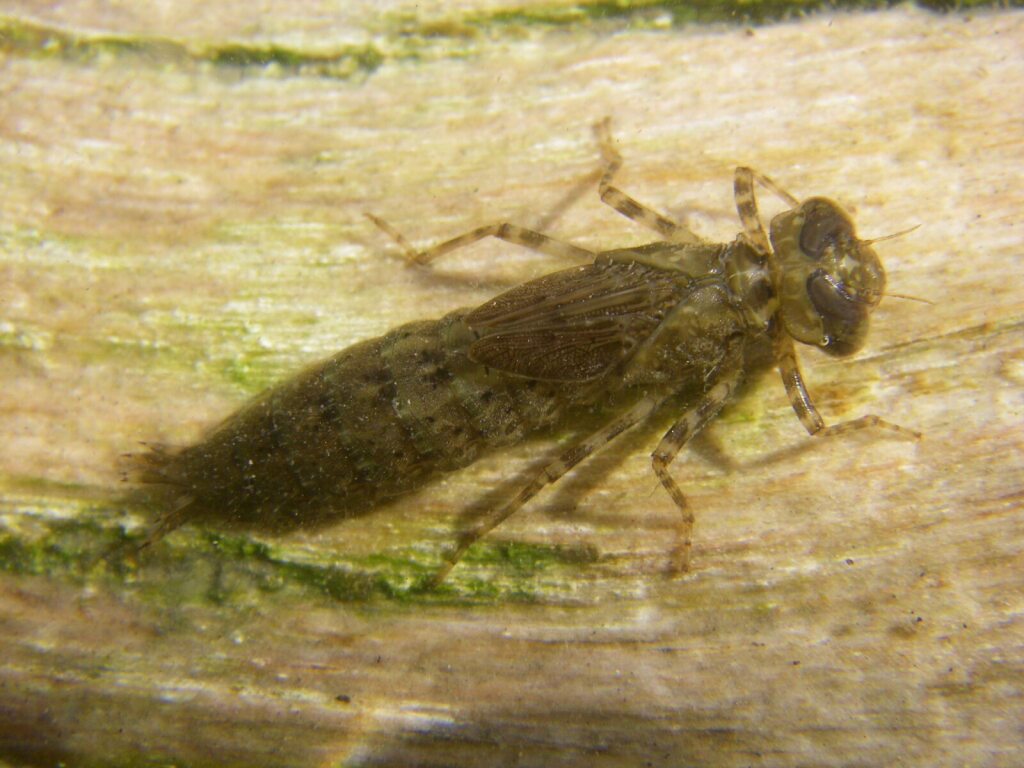
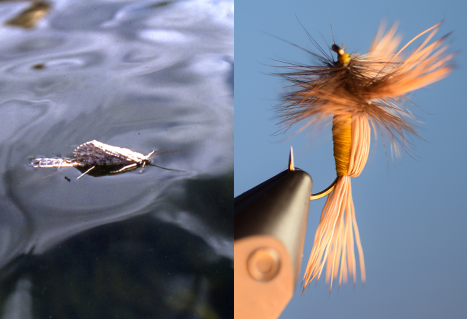
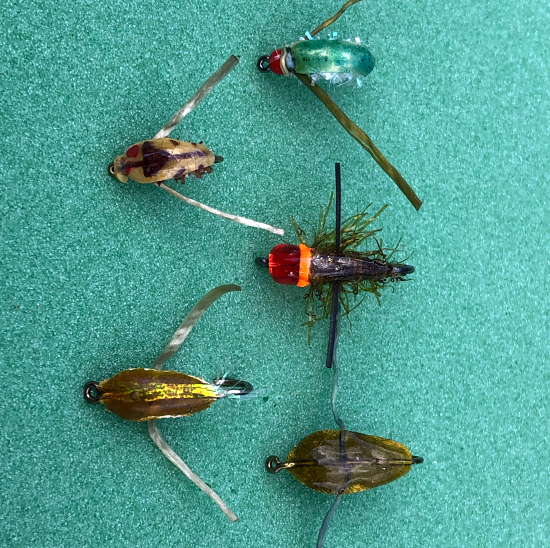
Author: Brian Chan, Freshwater Fisheries Society of BC Ambassador
Images: Brian Chan, Freshwater Fisheries Society of BC Ambassador
